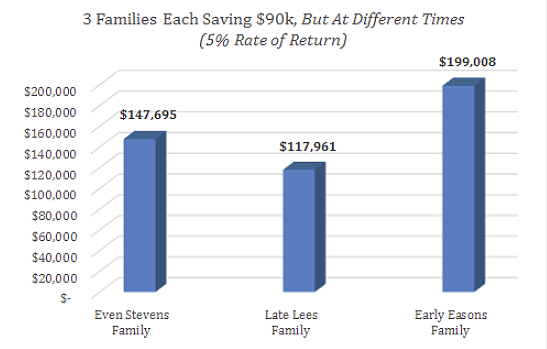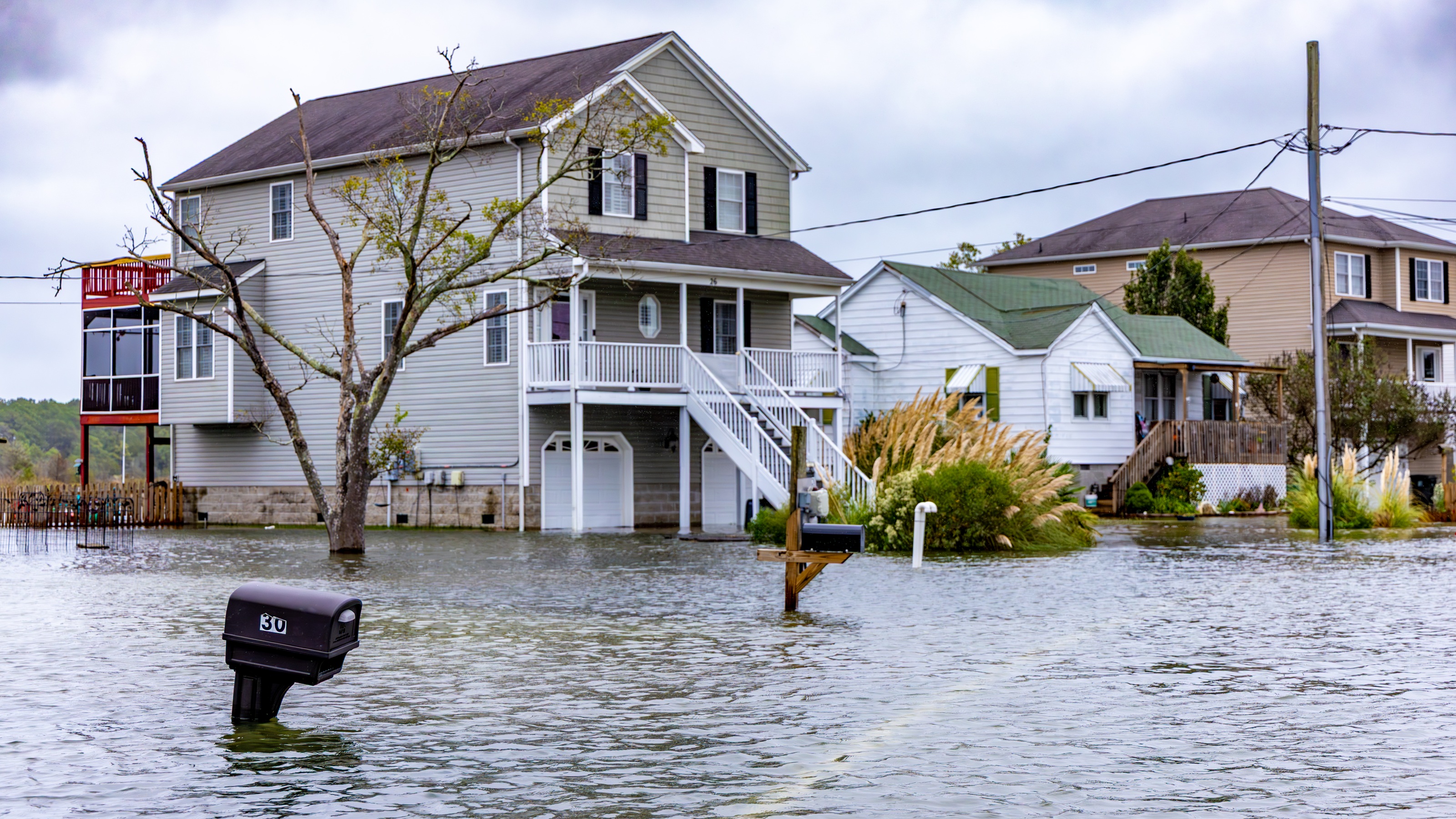The Best College Savings Strategy to Use
A 529 college savings plan comes with many advantages, and the best way to harness its power is to start ASAP and front-load your contributions.


If you’re a parent, you’ve undoubtedly wondered how you should save for your kids’ college educations … and how much you need to save.
With the cost of college only continuing to rise at a clip that outpaces inflation, we can expect higher education to require a hefty amount of money in the future. The best strategy you can use to be prepared for this reality is to start saving as early as you can — and don’t get caught playing catch-up later on.
Leverage a 529 Plan for College Savings
One of the best places to stash cash earmarked for college costs is within a 529 plan. The money you contribute here can grow and be used tax-free when your kids go to school (as long as the money is spent on qualifying education expenses).
From just $107.88 $24.99 for Kiplinger Personal Finance
Be a smarter, better informed investor.

Sign up for Kiplinger’s Free Newsletters
Profit and prosper with the best of expert advice on investing, taxes, retirement, personal finance and more - straight to your e-mail.
Profit and prosper with the best of expert advice - straight to your e-mail.
Because they’d need a Social Security number, your children need to be born before you can start using a plan; you can’t contribute before you have kids, or even while pregnant. (Note that, technically, if you’re determined to start saving before you start a family, there is one way around it: You can open account with yourself as the beneficiary, and then later switch it to your child.)
As soon as your children arrive in the world, I’d recommend setting aside a small amount of money each month into a 529 plan for them.
Why? Compounding! If you start when your child is born, that gives you 18 years to save. Many parents read that and feel they have plenty of time — but if you wait, you give yourself an uphill battle when it comes to saving enough.
Here’s the thing: Compounding returns is what will allow you to save less every month as long as you save longer. If you start when your child is young, it will be easier to generate the money needed to pay for college costs.
The more money you put in earlier the more time it has time to compound!
Why You Should Front-Load Your College Savings Accounts
Time is arguably your biggest advantage as an investor, because more time leads to increased compounding. Not convinced? Let’s look at a specific example with real numbers.
Imagine that three families all contribute the same amount of cash, $90,000, to their child’s 529 plan over 18 years — but they contribute the money at different times.
Family 1 (we’ll call them the Even Stevens Family) contributes $5,000 per year to a 529 plan.
Meanwhile, Family 2 (who we’ll call the Late Lees Family) contributes $1,000 per year in first five years. They gradually increase their contributions over time as college gets closer, with $2,500 per year for years 6-10, and $5,000 per year in years 11-15. In the last three years they have to save before their kid goes to college, they save $12,500, $15,000 and $20,000.
Finally, Family 3 (or the Early Easons Family) takes yet a different approach: Over the 18 years they have to save for college, they contribute $20,000 per year to the 529 plan for the first four years. In savings year five, they contribute $10,000. And then they simply leave the money invested in the plan, without contributing more cash between now and when their child goes to school.
Which family had the best strategy? Who ended up with the most money in the 529 plan? Here’s what each family has in their plan at the end of that 18-year savings period :

The results might surprise you. As we can see, the Stevens family ends up with almost $30,000 more saved for higher education expenses than the Lees — even though both families contributed the same amount of money.
This is how compounding works: Your money needs to time to grow. The Stevens family gave more of their money a longer period of time to grow. Even though the Lees made some pretty big contributions late in the game, that money never got a chance to compound — so they ended up with less overall.
And just look at what happens if you focus on saving as much as you can as early as you can! The Easons have vastly more money available to fund college — even though, again, they contributed the same amount as everyone else. But they also gave their money the most time to compound and grow, which is why they have over $81,000 more than the Lees and over $51,000 more than the Stevens family.
But What If Your Kid Doesn’t Go to College?
Of course, there’s one big caveat to all this, and it’s one some parents fear dealing with down the road: After all that effort to save “early and often,” what happens to the money in the 529 plan if your kid doesn’t go to college in 18 years?
For parents of multiple children, you could change the beneficiary of the account to another child in your household (or another family member, even yourself). And if you don’t need the money because your child gets a full scholarship, the 10% penalty for taking the cash out of the 529 plan is waived. (For more on that, read The 529 Plan Scholarship Exception.)
If this isn’t an option for whatever reason, then you might be looking at a worst-case scenario: a bunch of college savings with no college student. But this isn’t actually as bad as it seems, because you can access that money. You pay a 10% penalty on the earnings, but most families agree this potential risk is much better than not having enough savings for college for a child who does end up going.
Want to learn more? Be sure to check out this post about difference between direct and broker sold 529 plans — and why you need a direct plan.
Profit and prosper with the best of Kiplinger's advice on investing, taxes, retirement, personal finance and much more. Delivered daily. Enter your email in the box and click Sign Me Up.

Paul Sydlansky, founder of Lake Road Advisors LLC, has worked in the financial services industry for over 20 years. Prior to founding Lake Road Advisors, Paul worked as relationship manager for a Registered Investment Adviser. Previously, Paul worked at Morgan Stanley in New York City for 13 years. Paul is a CERTIFIED FINANCIAL PLANNER™ and a member of the National Association of Personal Financial Advisors (NAPFA) and the XY Planning Network (XYPN).
-
 Stocks Close Out Strong Month With Solid Amazon Earnings: Stock Market Today
Stocks Close Out Strong Month With Solid Amazon Earnings: Stock Market TodayAmazon lifted its spending forecast as its artificial intelligence (AI) initiatives create "a massive opportunity."
-
 I Just Paid Off My Car. Can I Downgrade My Car Insurance Now?
I Just Paid Off My Car. Can I Downgrade My Car Insurance Now?You've gotten rid of that car payment. Can you save even more by downgrading your car insurance? Here's what to consider.
-
 Government Shutdown Freezes National Flood Insurance Program: What Homeowners and Buyers Need to Know
Government Shutdown Freezes National Flood Insurance Program: What Homeowners and Buyers Need to KnowFEMA's National Flood Insurance Program is unavailable for new customers, increased coverage or renewals during the government shutdown.
-
 This Is Why Judge Judy Says Details Are Important in Contracts: This Contract Had Holes
This Is Why Judge Judy Says Details Are Important in Contracts: This Contract Had HolesA couple's disastrous experience with reclaimed wood flooring led to safety hazards and a lesson in the critical importance of detailed contracts.
-
 Should Your Brokerage Firm Be Your Bookie? A Financial Professional Weighs In
Should Your Brokerage Firm Be Your Bookie? A Financial Professional Weighs InSome brokerage firms are promoting 'event contracts,' which are essentially yes-or-no wagers, blurring the lines between investing and gambling.
-
 Supermarkets Have Become a Pickpockets' Paradise: How to Avoid Falling Victim
Supermarkets Have Become a Pickpockets' Paradise: How to Avoid Falling VictimSome stores regularly rearrange inventory with the aim of increasing purchases, and they're creating opportunities for thieves to steal from customers.
-
 Budget Hacks Won't Cut It: These Five Strategies From a Financial Planner Can Help Build Significant Wealth
Budget Hacks Won't Cut It: These Five Strategies From a Financial Planner Can Help Build Significant WealthCutting out your daily latte might make you feel virtuous, but tracking pennies won't pay off. Here are some strategies that can actually build wealth.
-
 To Unwrap a Budget-Friendly Holiday, Consider These Smart Moves From a Financial Professional
To Unwrap a Budget-Friendly Holiday, Consider These Smart Moves From a Financial ProfessionalYou can avoid a 'holiday hangover' of debt by setting a realistic budget, making a detailed list, considering alternative gifts, starting to save now and more.
-
 Treat Home Equity Like Other Investments in Your Retirement Plan: Look at Its Track Record
Treat Home Equity Like Other Investments in Your Retirement Plan: Look at Its Track RecordHomeowners who are considering using home equity in their retirement plan can analyze it like they do their other investments. Here's how.
-
 Why Does It Take Insurers So Darn Long to Pay Claims? An Insurance Expert Explains
Why Does It Take Insurers So Darn Long to Pay Claims? An Insurance Expert ExplainsThe process of verification, investigation and cost assessment after a loss is complex and goes beyond simply cutting a check.